The official and very long name of this rum is “Pere Labat ‘70.7’ Brut de Colonne Rhum Blanc Agricole de Marie Galante” and clearly wants to have a title that is as long as the ABV is high. That proof point, of course, is impressive by itself, since until quite recently, white agricole rhums tended to park themselves contentedly in the 50-55% space and made their reputations by beefing up Ti Punches that knocked defenseless cruise line tourists across the room.
However, it was never going to stay that way. Even before my list of the strongest rums in the world came out in 2019, it seems like there was a quiet sort of race to the top that’s been steadily building a head of steam over the last quarter century or so. Initially there were just the famed 151s dating back to the 1800s, then a few badass island champions came out with rums like the Sunset Very Strong (84.5%) from St. Vincent, Denros Strong (80%) from St. Lucia, the Grenadian outfit Rivers’ 90% beefcake (only sold locally) — and of course the Surinamese Marienburg 90 held the crown for a long time until it was dethroned in early 2022 by one of the indie bottlers who have slowly but surely begun to colonize the gasp-inducing low-oxygen high-altitude drinkosphere.
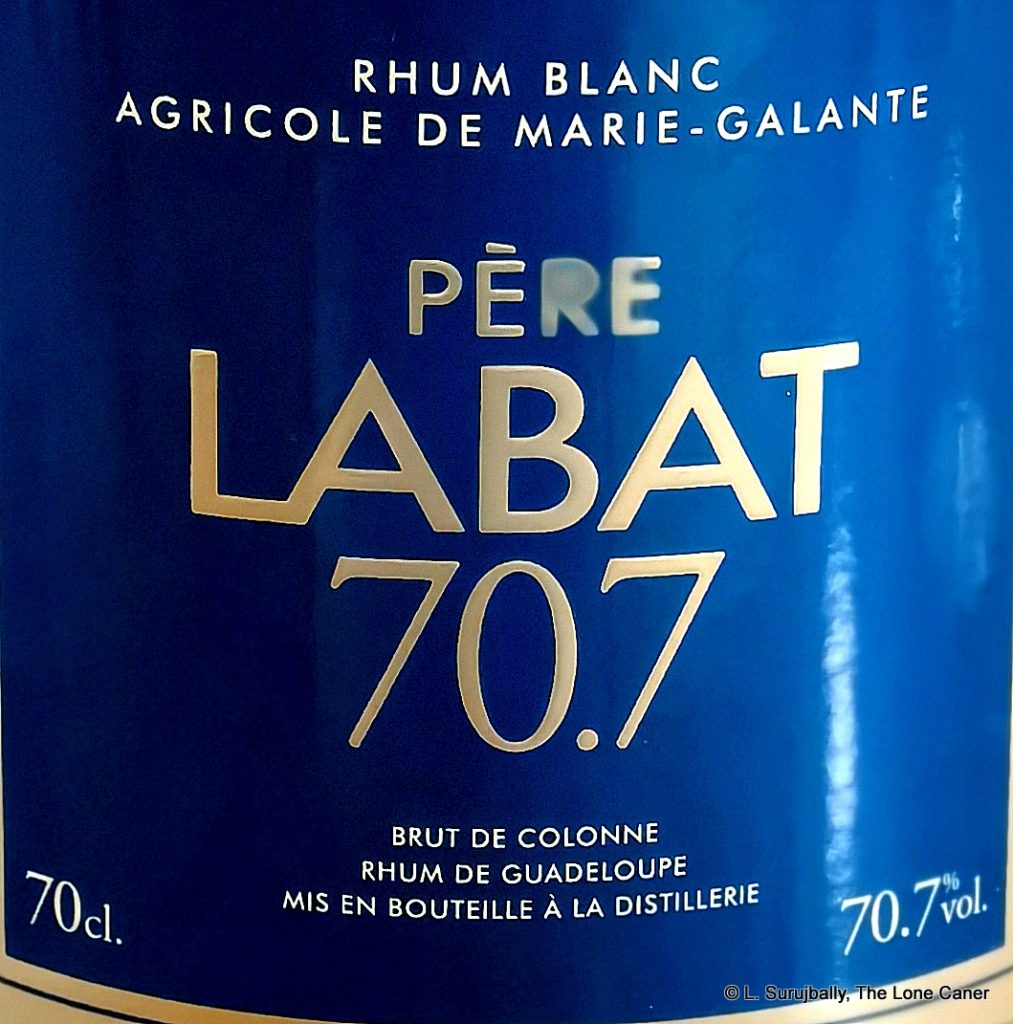 Somehow, though, agricoles and French island rums never really bothered. Oh there were always a few: we saw rums like the 62% ABV Longueteau “Genesis”, Dillon had a 71.3% brut de colonne…but these were rarities, and sniffed at by most. What’s the point? was a not uncommon question. But gradually over the last few years, agricoles picked up the pace as well: Saint James released their Brut de Colonne blanc “BIO” at 74.2%, Longueteau upped the Genesis to 73.51%, Barikken, a French indie, said to hell with it and came up with one from Montebello at 81.6%…and somewhere around 2019 or so, Pere Labat, the small distillery at Poisson on Marie Galante, introduced us to their own overproof white, the “70.7” as it crept up the ladder of their progressively stronger expressions (40º, 50º and 59º).
Somehow, though, agricoles and French island rums never really bothered. Oh there were always a few: we saw rums like the 62% ABV Longueteau “Genesis”, Dillon had a 71.3% brut de colonne…but these were rarities, and sniffed at by most. What’s the point? was a not uncommon question. But gradually over the last few years, agricoles picked up the pace as well: Saint James released their Brut de Colonne blanc “BIO” at 74.2%, Longueteau upped the Genesis to 73.51%, Barikken, a French indie, said to hell with it and came up with one from Montebello at 81.6%…and somewhere around 2019 or so, Pere Labat, the small distillery at Poisson on Marie Galante, introduced us to their own overproof white, the “70.7” as it crept up the ladder of their progressively stronger expressions (40º, 50º and 59º).
No medals for guessing what the strength is: the number on the label. The rhum is an agricole, from cane juice; after a three day fermentation period using baker’s yeast it’s run through their single-column still (of which they have two), rested for an unspecified number of months in inert vats, and then bottled as is without dilution or reduction. That’s what brut de colonne means: straight from the still without any further processing or mucking about, and what that provides is a profile that’s about as close as you’re going to get to what terroire is all about – assuming you can handle what it delivers.
The rhum starts with a nose that is not actually all that unpleasantly sharp, just one that is firmly, deeply, strongly intense. It’s like an über-agricole: everything you like about cane juice rhums is here, dialled up a notch or four. The aromas are herbal, grassy, fruity, and if you can make smells equal colours in your mind, then it’s a vibrant thrumming green. Cucumbers, dill, green apples, soursop, peas, grapes, that kind of thing. And more: after it opens up for a few minutes, you can get hints of strawberries, pine sol (!!), pineapples and – somewhat to my surprise – clothes fresh out of the dryer, hinting at fresh laundry detergent and fabric softener.
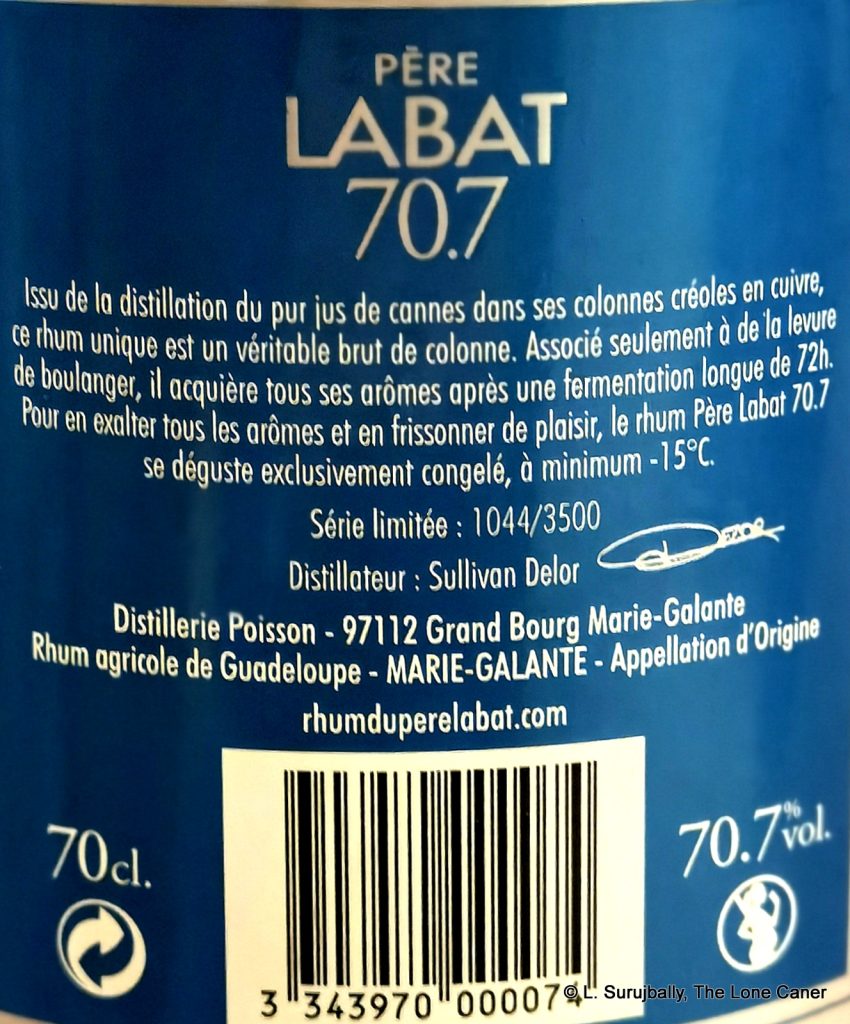 Tasting it requires some patience, because at the inception you’re getting old cardboard notes, some brine and olives, wet sawdust, and that may not be what you signed up for. Be of good cheer, the good stuff is coming, and when it does, it arrives with authority – it tastes like watermelon with an alcohol jolt and a sprig of mint, a touch salty, but mostly sweet. It tastes of pears, green grapes, apples, sugar cane stalks bleeding their sap, passion fruit, pomegranates, red currants and for a kick, adds cucumber slices in a sort of pepper infused white vinegar. And underneath it all there’s that pungently tart thin sweetness of cane juice, yoghurt, lemongrass and ginger, moving smoothly to a long, fragrant finish of sweetened lemon juice, iced tea and a nice sweet and sour note that’s just this side of yummy.
Tasting it requires some patience, because at the inception you’re getting old cardboard notes, some brine and olives, wet sawdust, and that may not be what you signed up for. Be of good cheer, the good stuff is coming, and when it does, it arrives with authority – it tastes like watermelon with an alcohol jolt and a sprig of mint, a touch salty, but mostly sweet. It tastes of pears, green grapes, apples, sugar cane stalks bleeding their sap, passion fruit, pomegranates, red currants and for a kick, adds cucumber slices in a sort of pepper infused white vinegar. And underneath it all there’s that pungently tart thin sweetness of cane juice, yoghurt, lemongrass and ginger, moving smoothly to a long, fragrant finish of sweetened lemon juice, iced tea and a nice sweet and sour note that’s just this side of yummy.
The 70.7 works on just about every level it choses. Want power? Want intensity of flavour? With that high ABV, it delivers. Want the subtlety of complex notes working well together? Yep, it has that too, with or without some water to tame it. You like an agricole profile but want one that brings something new to the party? This is one that will do you good, though of course it’s not to be taken lightly – all the above aside, when you’re sipping juice close to ¾ pure ethanol, then some caution is in order.
In short, what you get here is a seriously flavourful rum that starts with a bang, goes like a bat out of hell and stops just shy of overwhelming. Labat’s strongest white agricole is a well oiled, smoothly efficient flavour delivery system, as devoid of fat as Top Gun’s football players, and with little of it wasted, all of it for a purpose: to get as much taste into you before you start drooling and get poured into your bed by a highly annoyed significant other, even as you sport a sh*t eating grin on your face. Trust me. I know.
(#915)(85/100) ⭐⭐⭐½
Other notes
- Oddly, Labat’s web page does not list this rum anywhere.
- Limited run of 3500 bottles. I think it was first issued in 2019, and it’s an annual release.
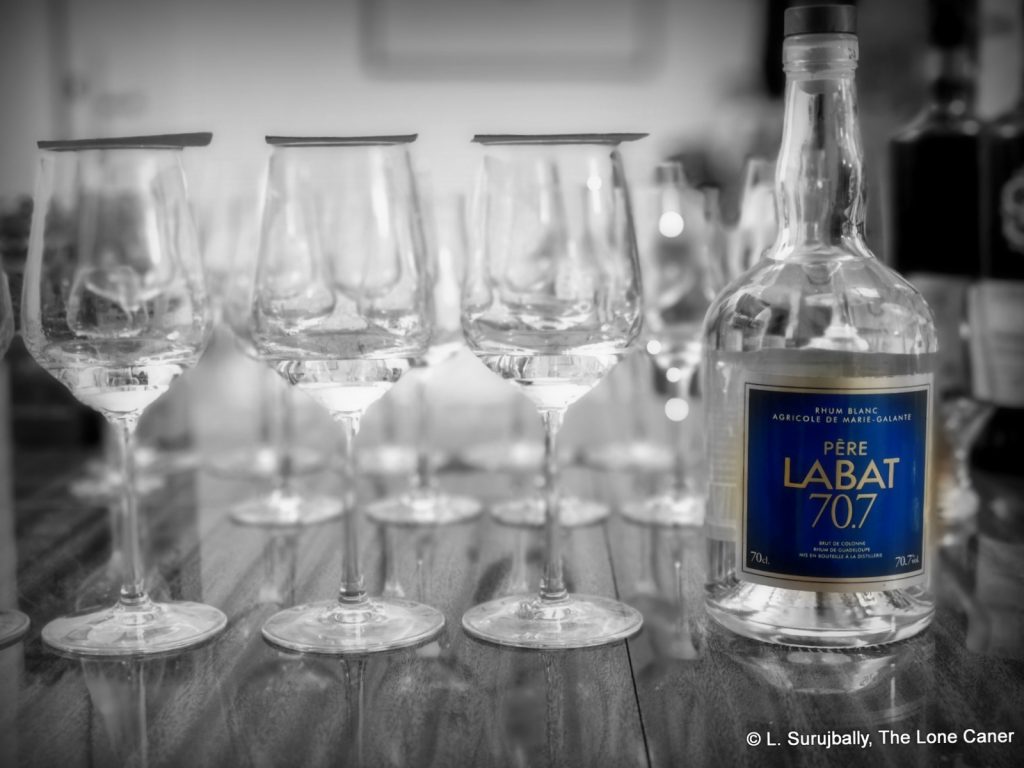
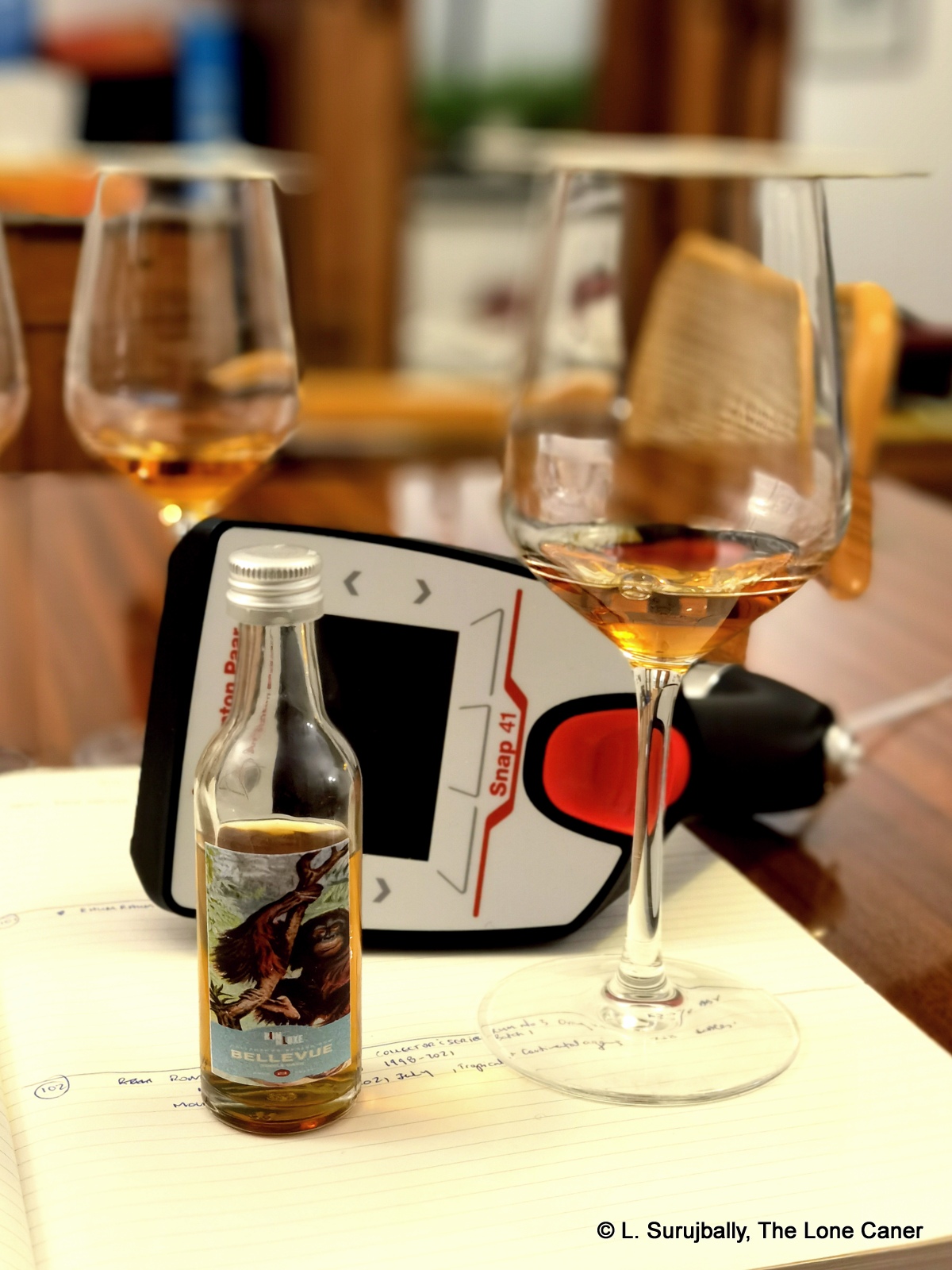
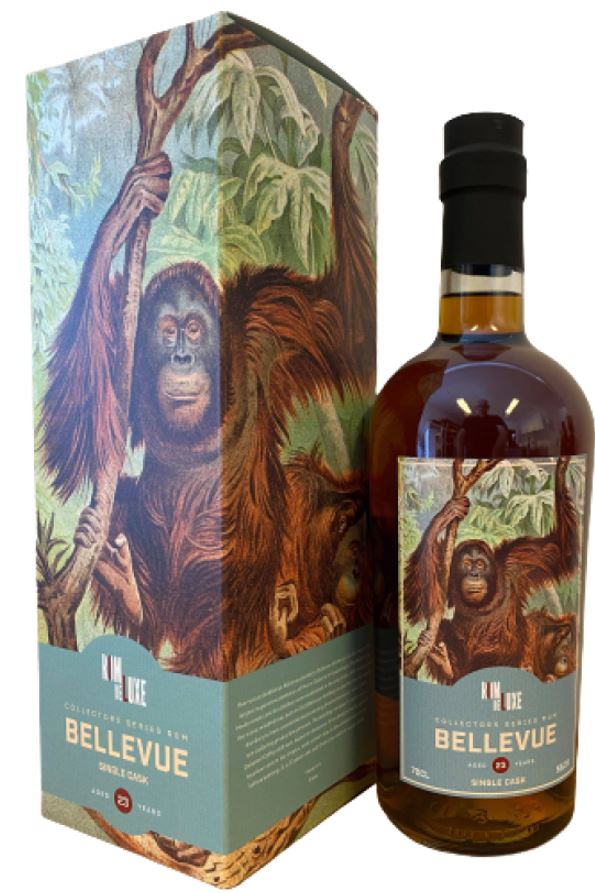

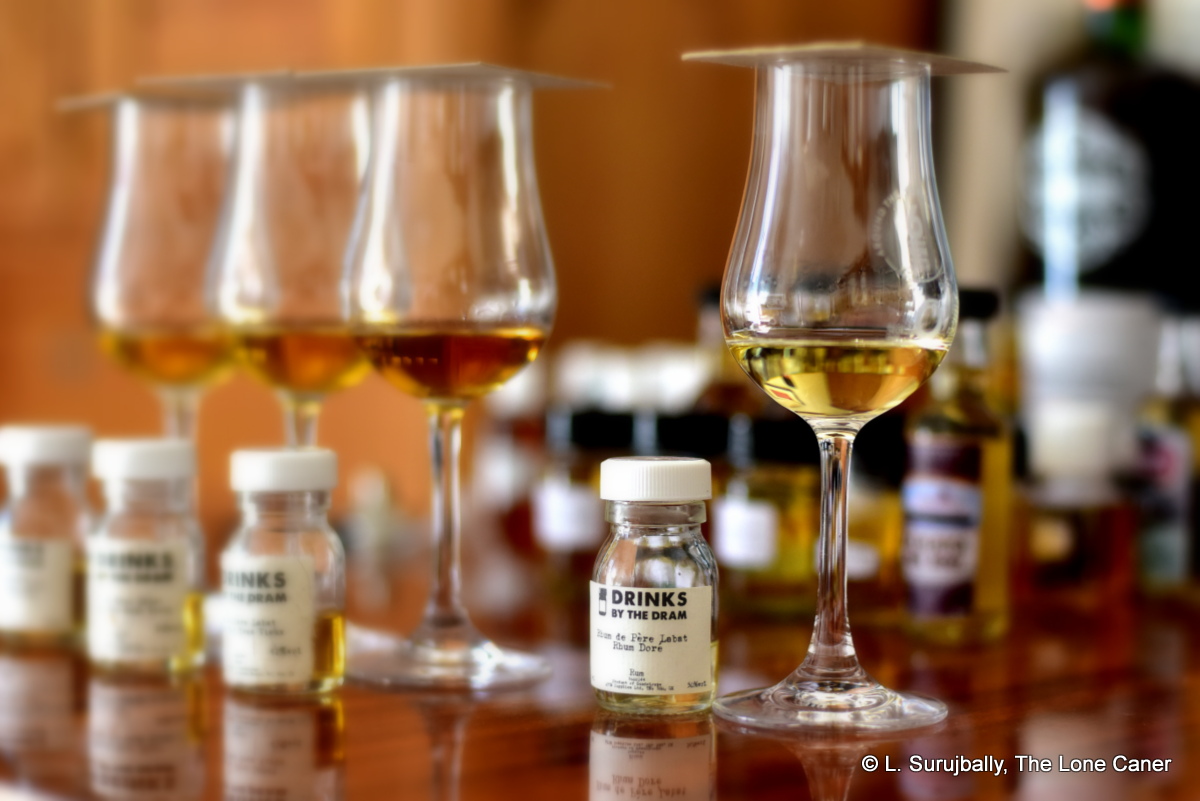
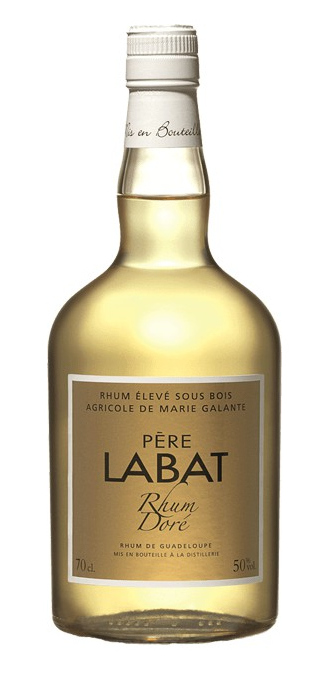
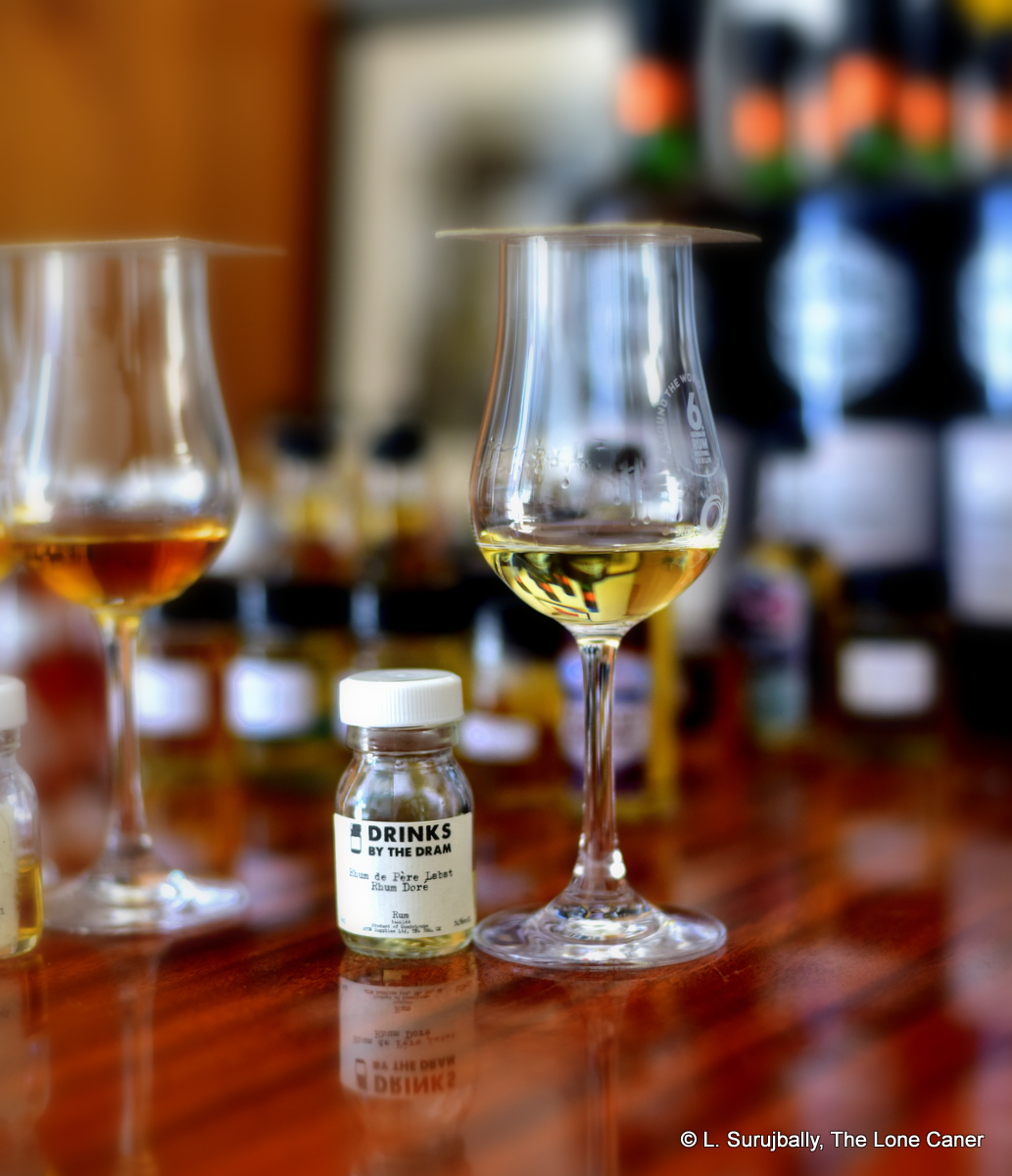
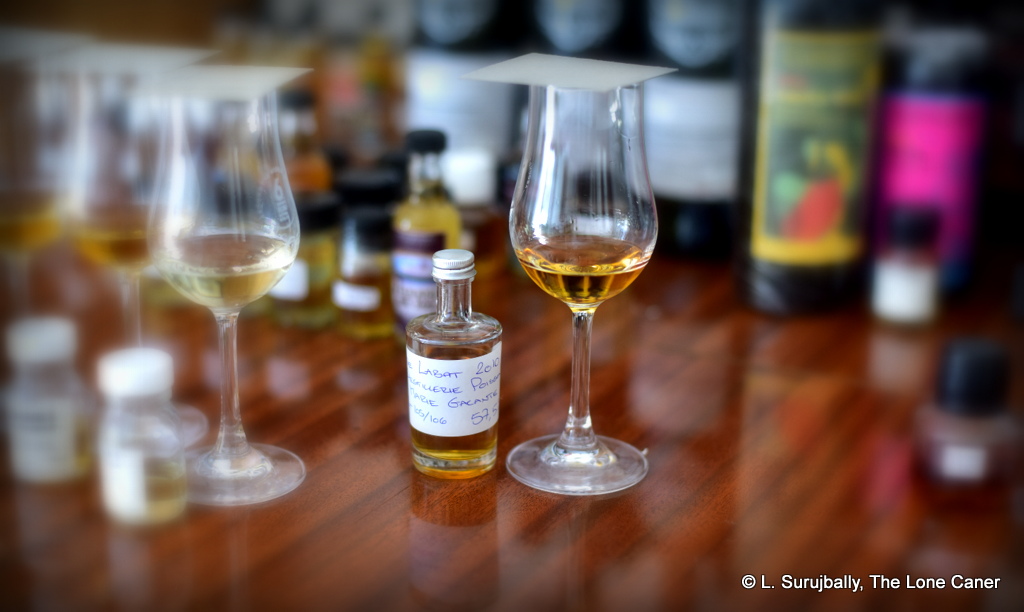
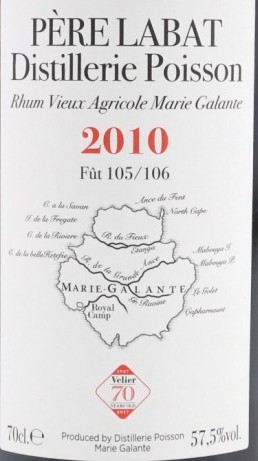
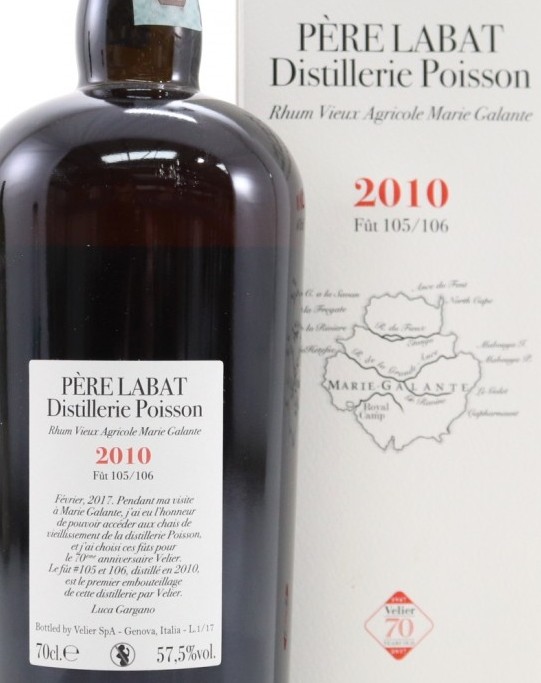
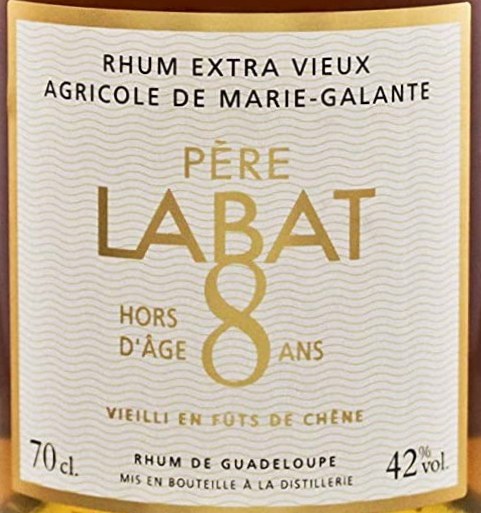
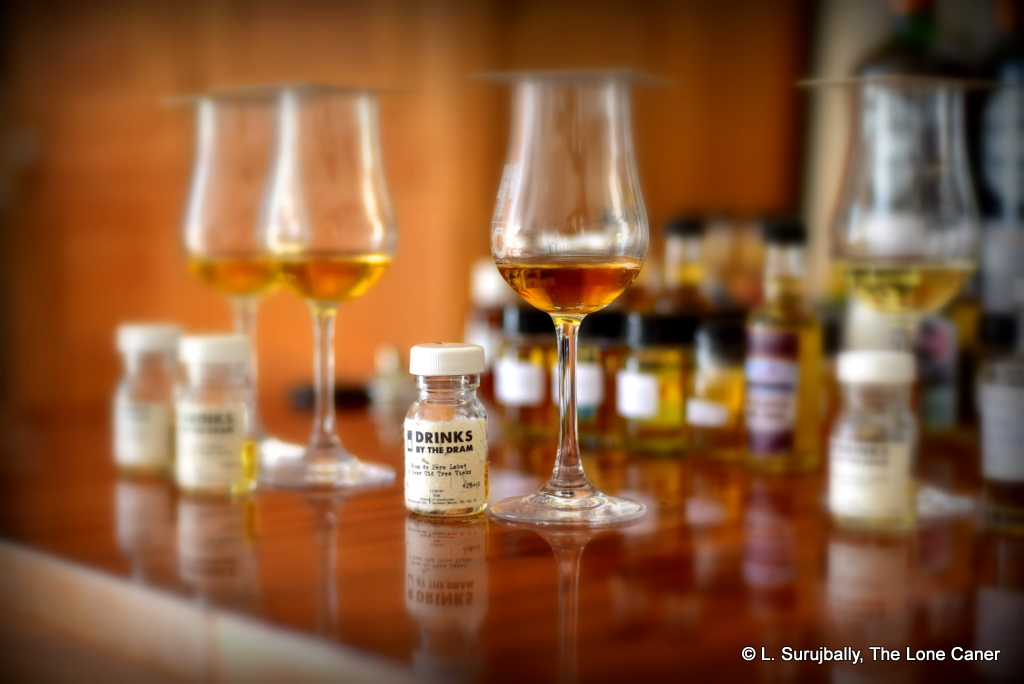

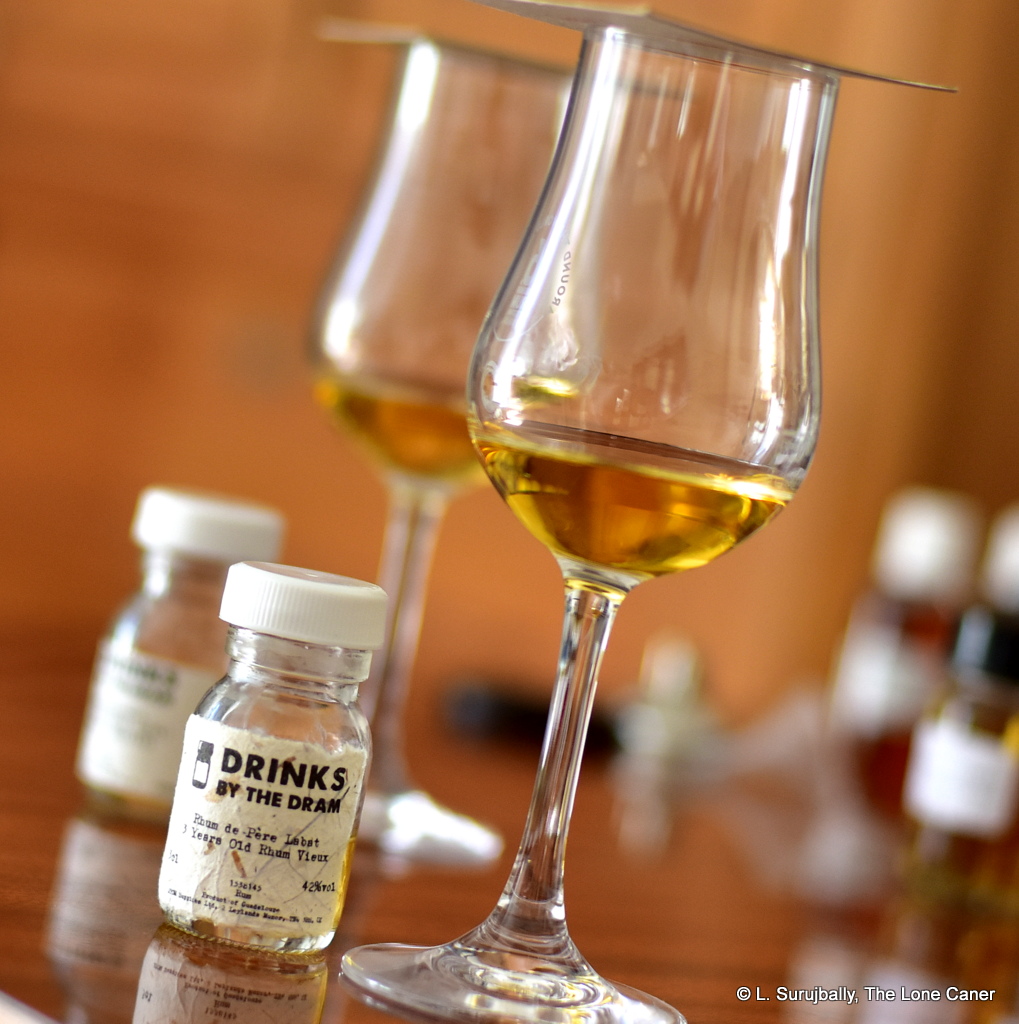
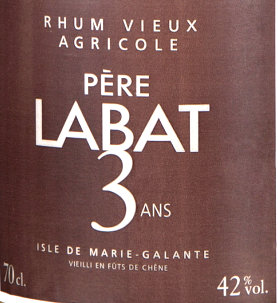
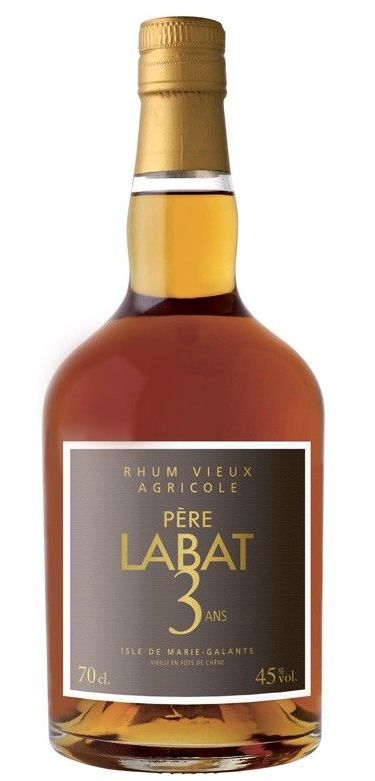
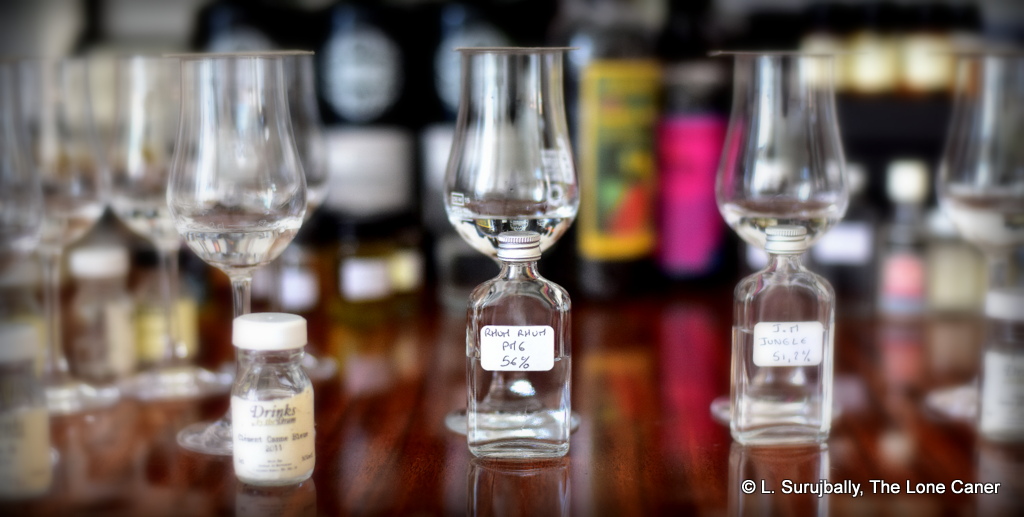
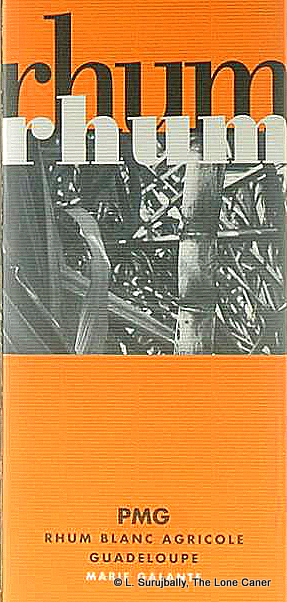 Although the plan was always to sell white (unaged) rhum, some was also laid away to age and the aged portion turned into the “Liberation” series in later years. The white was a constant, however, and remains on sale to this day – this orange-labelled edition was 56% ABV and I believe it is always released together with a green-labelled version at 41% ABV for gentler souls. It doesn’t seem to have been marked off by year in any way, and as far as I am aware production methodology remains consistent year in and year out.
Although the plan was always to sell white (unaged) rhum, some was also laid away to age and the aged portion turned into the “Liberation” series in later years. The white was a constant, however, and remains on sale to this day – this orange-labelled edition was 56% ABV and I believe it is always released together with a green-labelled version at 41% ABV for gentler souls. It doesn’t seem to have been marked off by year in any way, and as far as I am aware production methodology remains consistent year in and year out.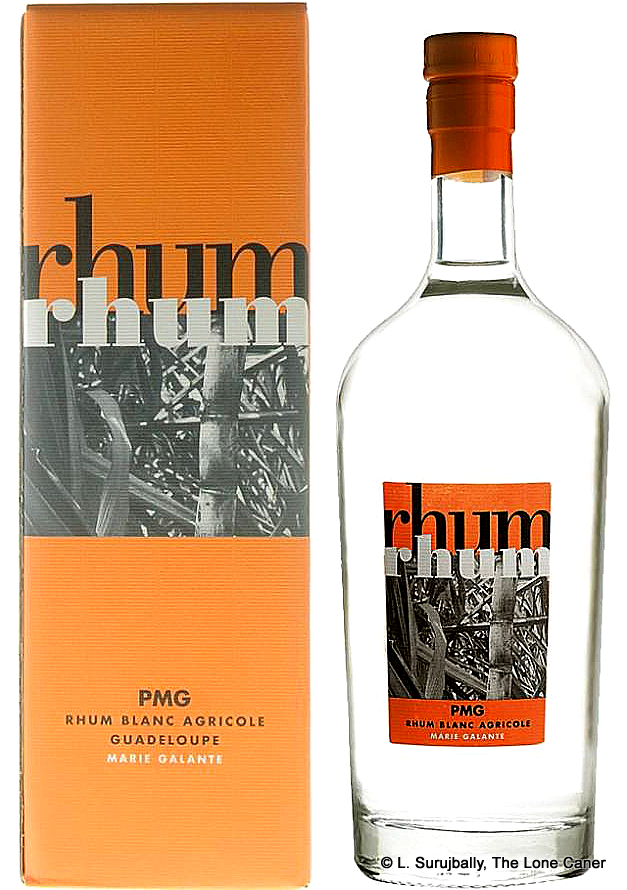 From the description I’m giving, it’s clear that I like this rhum, a lot. I think it mixes up the raw animal ferocity of a more primitive cane juice rhum with the crisp and clear precision of a Martinique blanc, while just barely holding the damn thing on a leash, and yeah, I enjoyed it immensely. I do however, wonder about its accessibility and acceptance given the price, which is around $90 in the US. It varies around the world and on Rum Auctioneer it averaged out around £70 (crazy, since
From the description I’m giving, it’s clear that I like this rhum, a lot. I think it mixes up the raw animal ferocity of a more primitive cane juice rhum with the crisp and clear precision of a Martinique blanc, while just barely holding the damn thing on a leash, and yeah, I enjoyed it immensely. I do however, wonder about its accessibility and acceptance given the price, which is around $90 in the US. It varies around the world and on Rum Auctioneer it averaged out around £70 (crazy, since 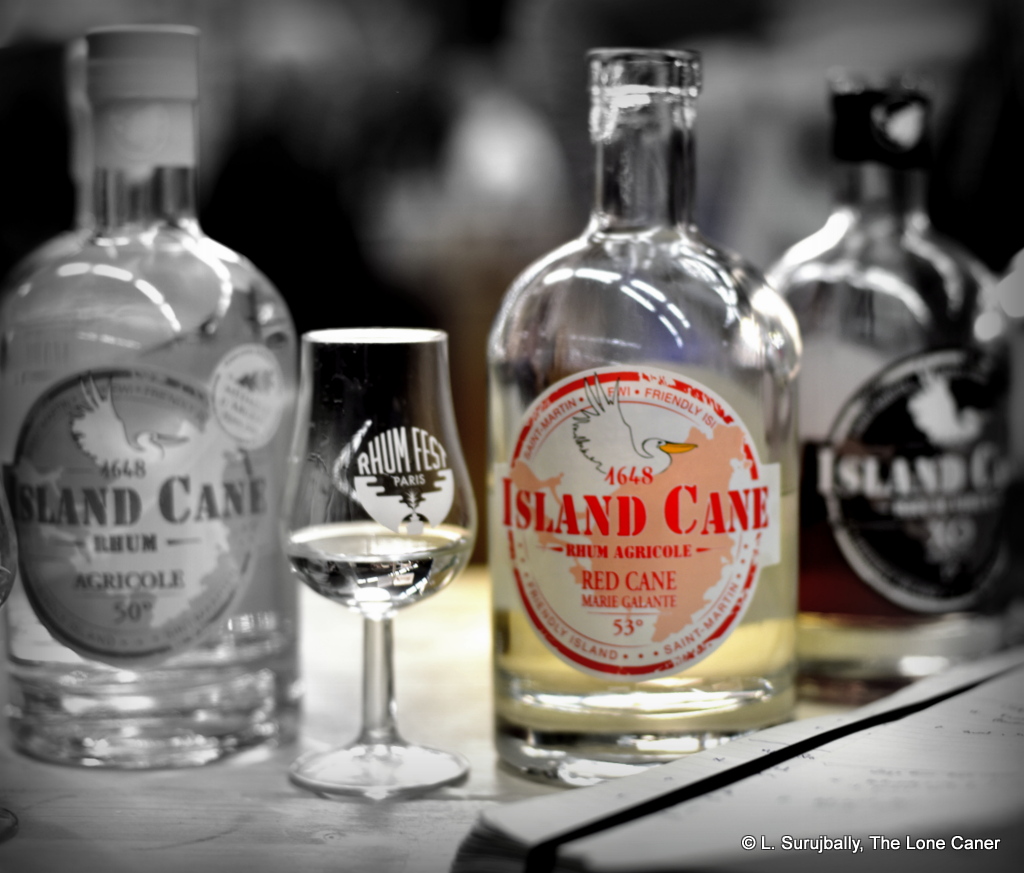
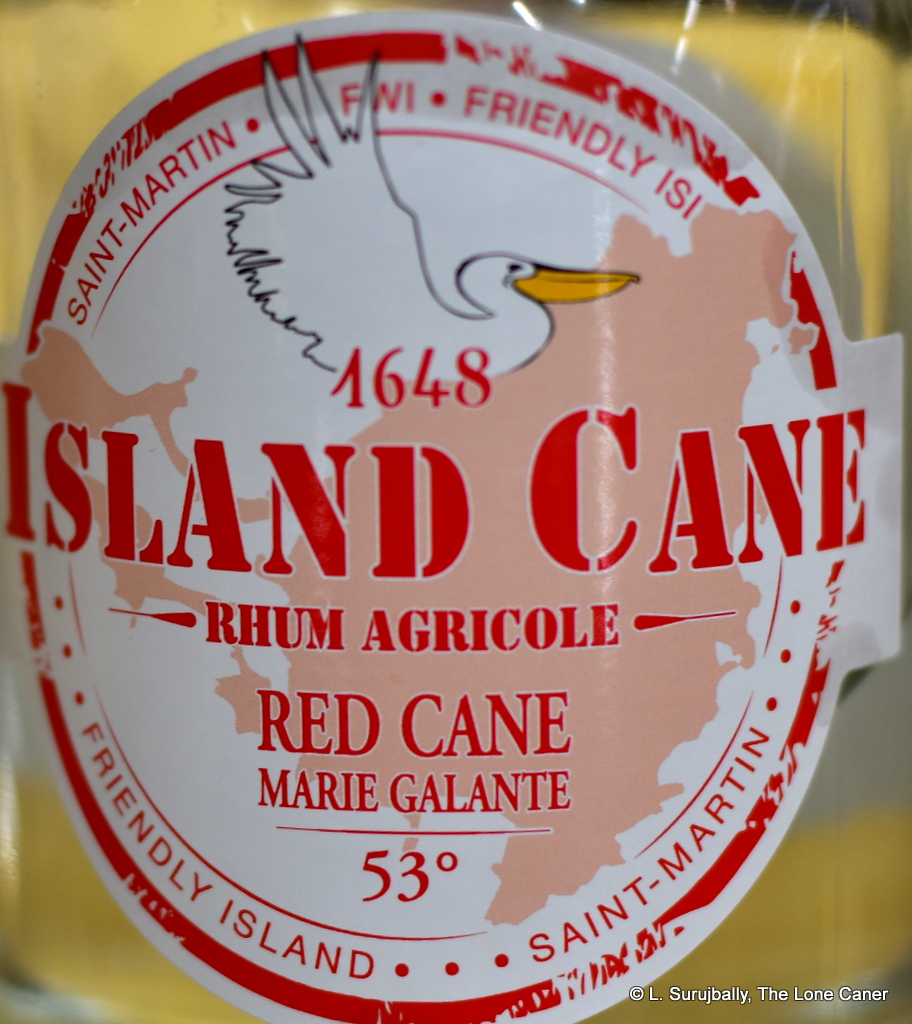 All that comes together in a rhum of uncommonly original aroma and taste. It opens with smells that confirm its provenance as an agricole, and it displays most of the hallmarks of a rhum from the blanc side (herbs, grassiness, crisp citrus and tart fruits)…but that out of the way, evidently feels it is perfectly within its rights to take a screeching ninety degree left turn into the woods. Woody and even meaty notes creep out, which seem completely out of place, yet somehow work. This all combines with salt, rancio, brine, and olives to mix it up some more, but the overall effect is not unpleasant – rather it provides a symphony of undulating aromas that move in and out, no single one ever dominating for long before being elbowed out of the way by another.
All that comes together in a rhum of uncommonly original aroma and taste. It opens with smells that confirm its provenance as an agricole, and it displays most of the hallmarks of a rhum from the blanc side (herbs, grassiness, crisp citrus and tart fruits)…but that out of the way, evidently feels it is perfectly within its rights to take a screeching ninety degree left turn into the woods. Woody and even meaty notes creep out, which seem completely out of place, yet somehow work. This all combines with salt, rancio, brine, and olives to mix it up some more, but the overall effect is not unpleasant – rather it provides a symphony of undulating aromas that move in and out, no single one ever dominating for long before being elbowed out of the way by another.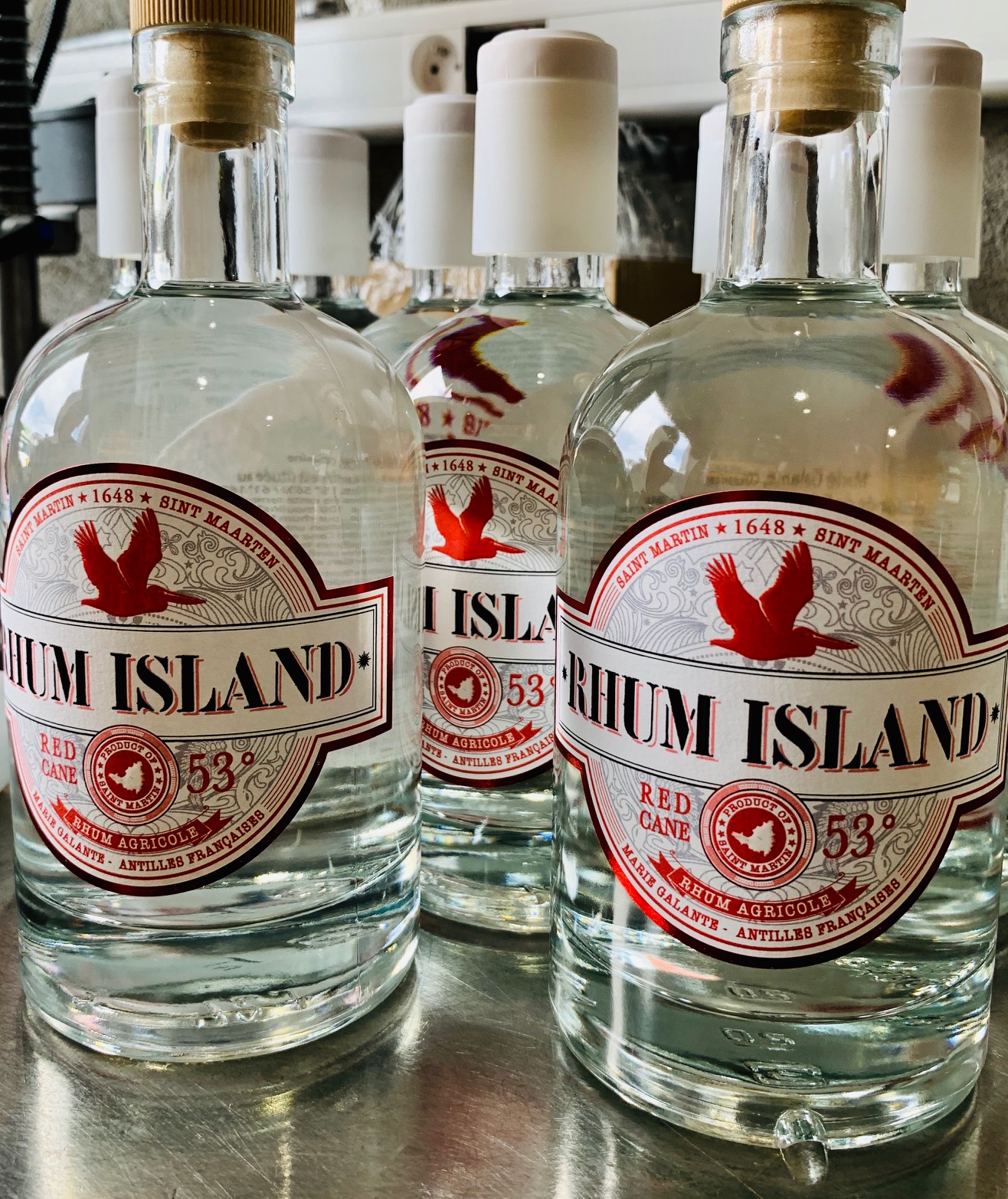
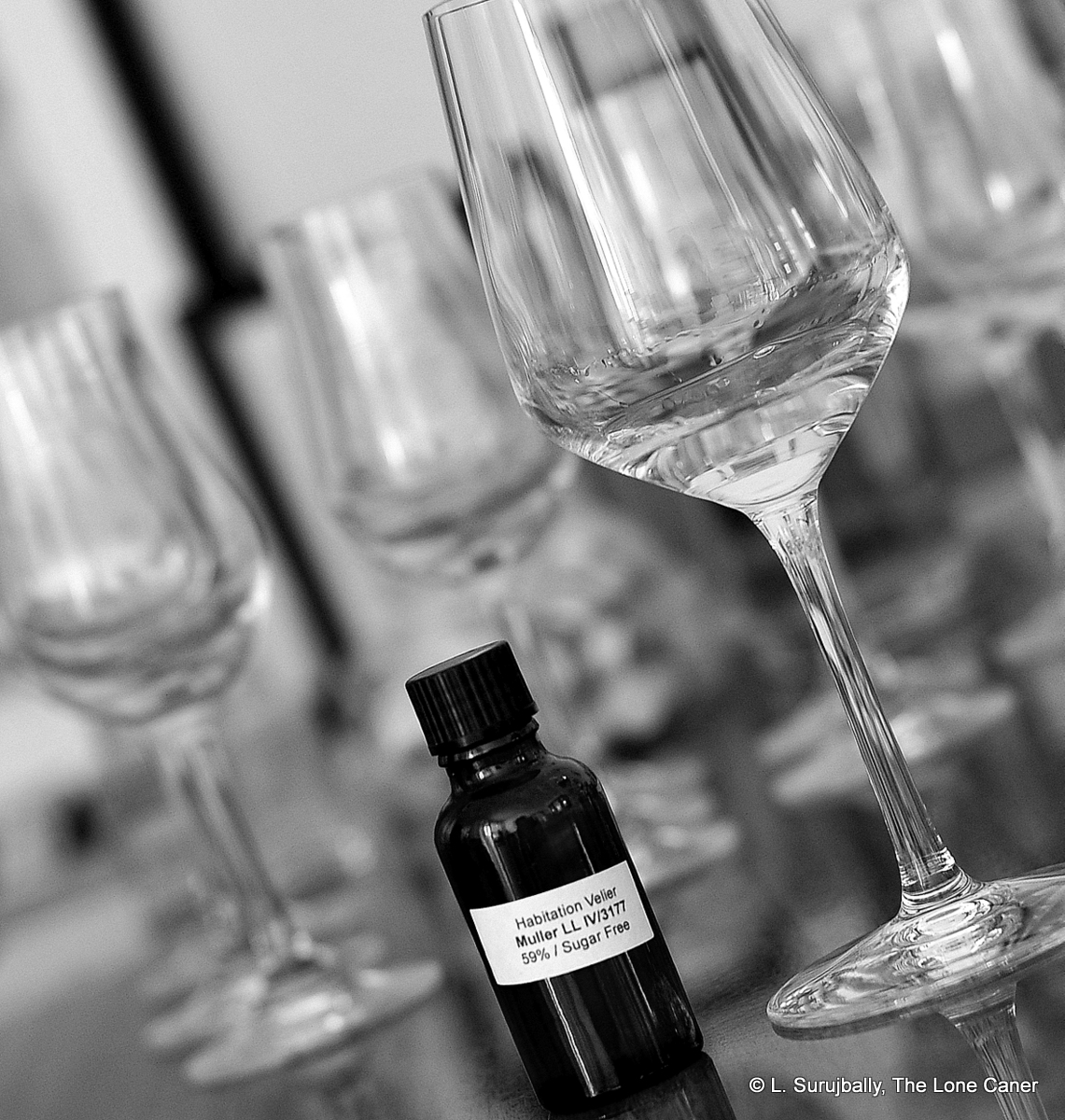
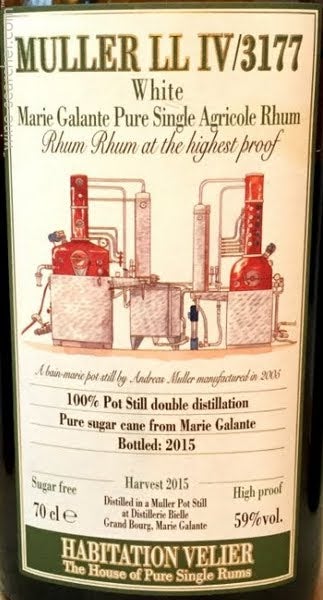 So let’s spare some time to look at this rather unique white rum released by Habitation Velier, one whose brown bottle is bolted to a near-dyslexia-inducing name only a rum geek or still-maker could possibly love. And let me tell you, unaged or not, it really is a monster truck of tastes and flavours and issued at precisely the right strength for what it attempts to do.
So let’s spare some time to look at this rather unique white rum released by Habitation Velier, one whose brown bottle is bolted to a near-dyslexia-inducing name only a rum geek or still-maker could possibly love. And let me tell you, unaged or not, it really is a monster truck of tastes and flavours and issued at precisely the right strength for what it attempts to do.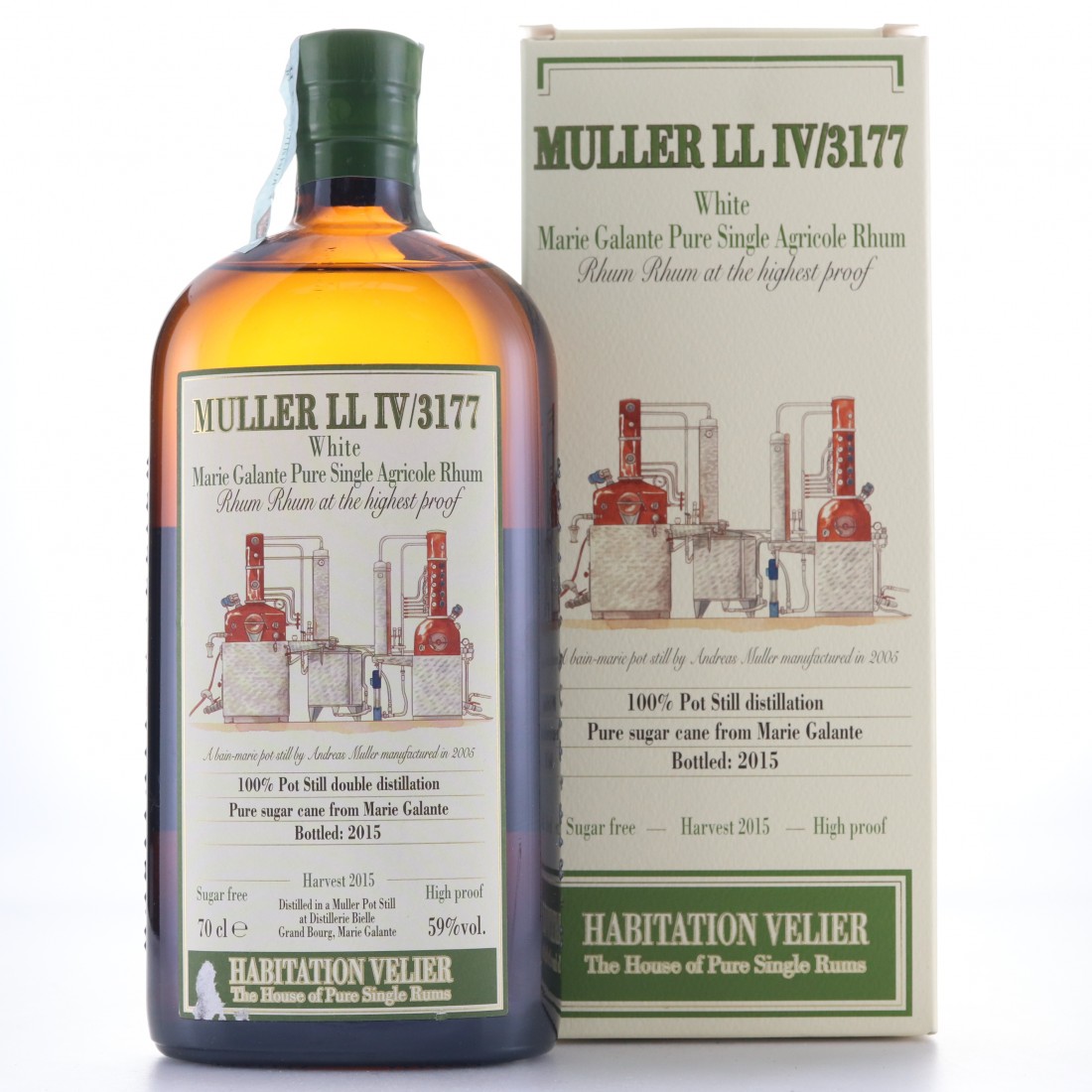 Evaluating a rum like this requires some thinking, because there are both familiar and odd elements to the entire experience. It reminds me of
Evaluating a rum like this requires some thinking, because there are both familiar and odd elements to the entire experience. It reminds me of 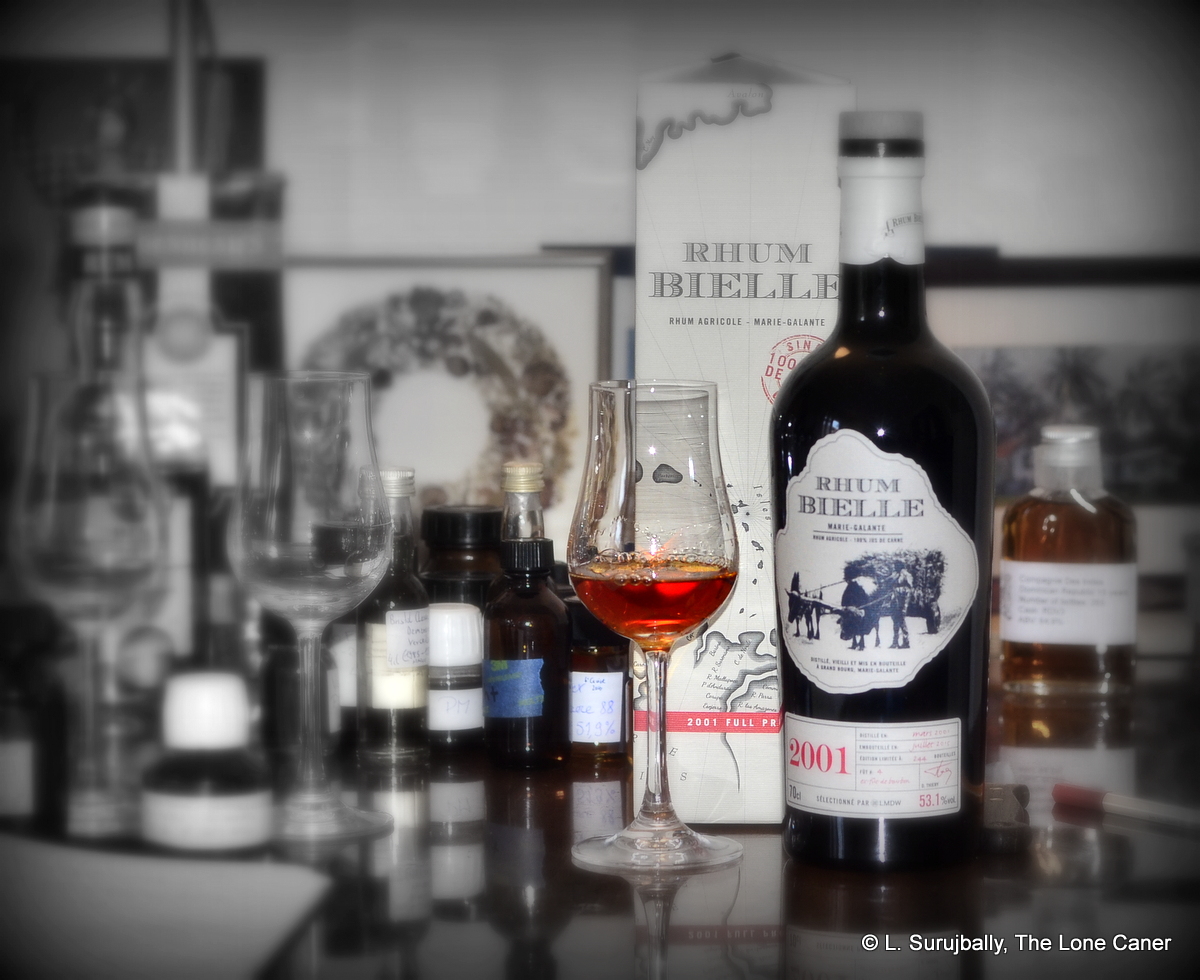
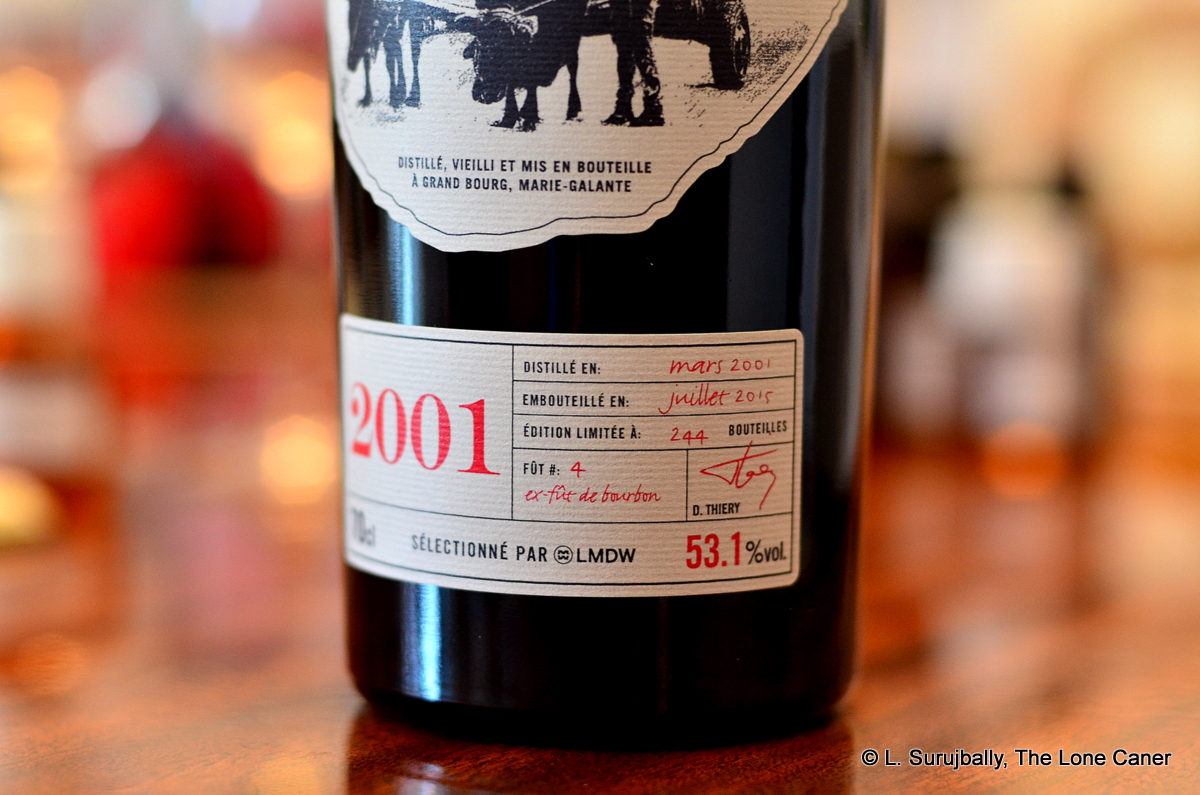

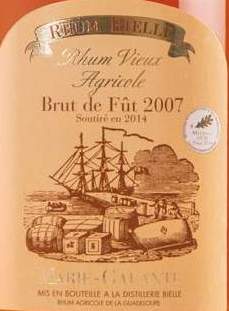
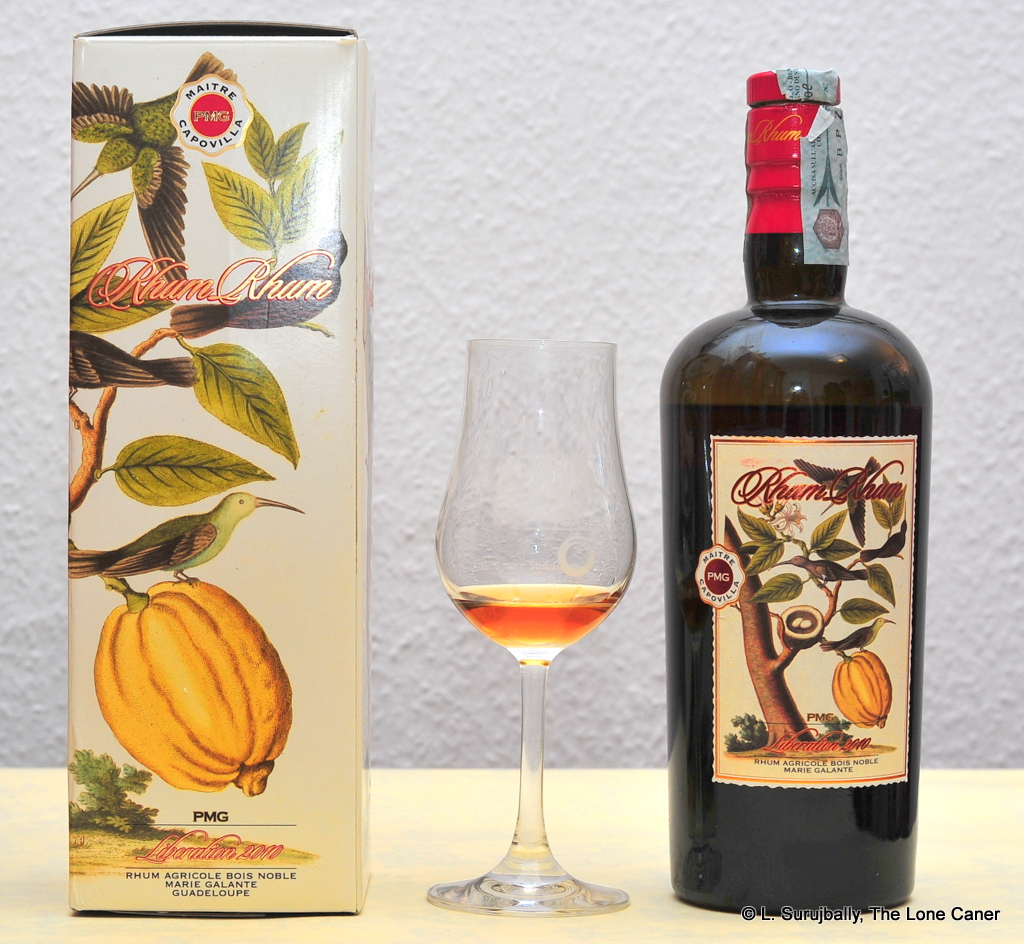
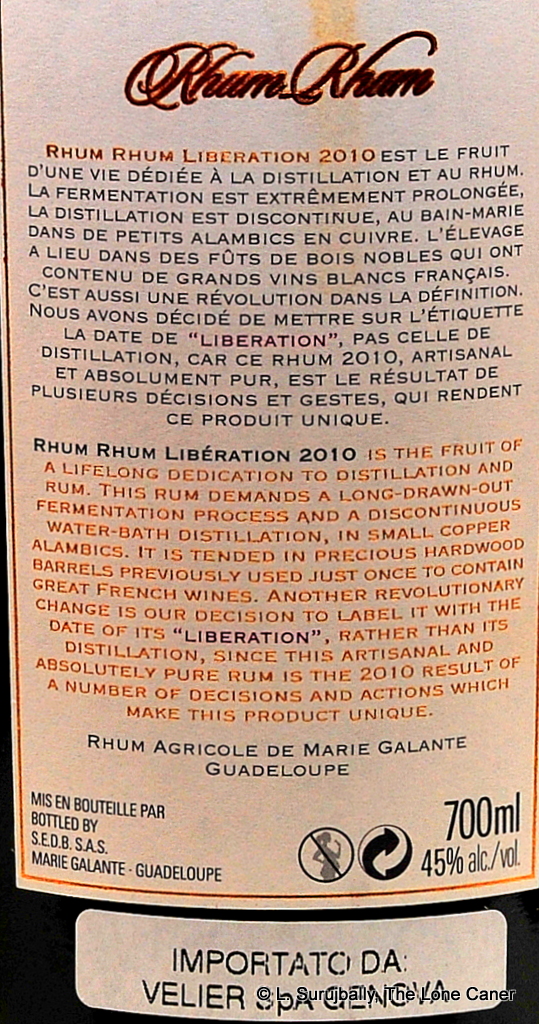
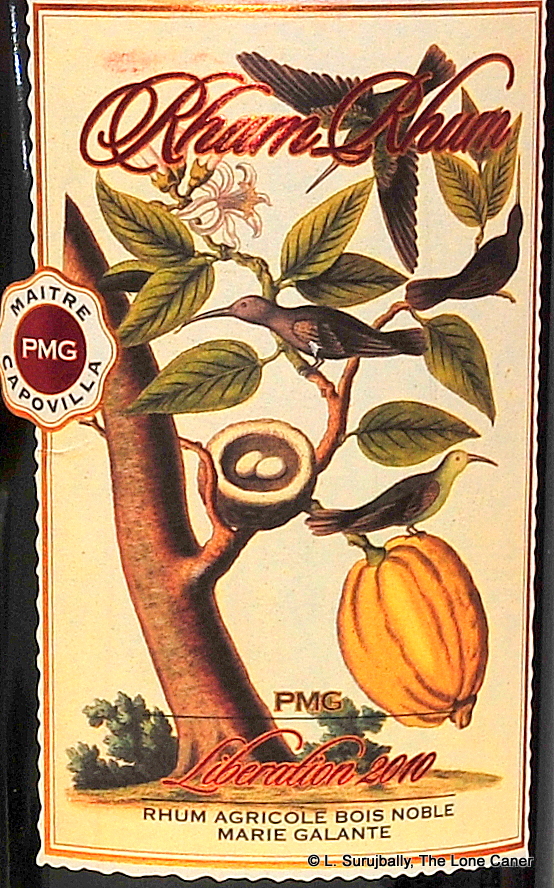
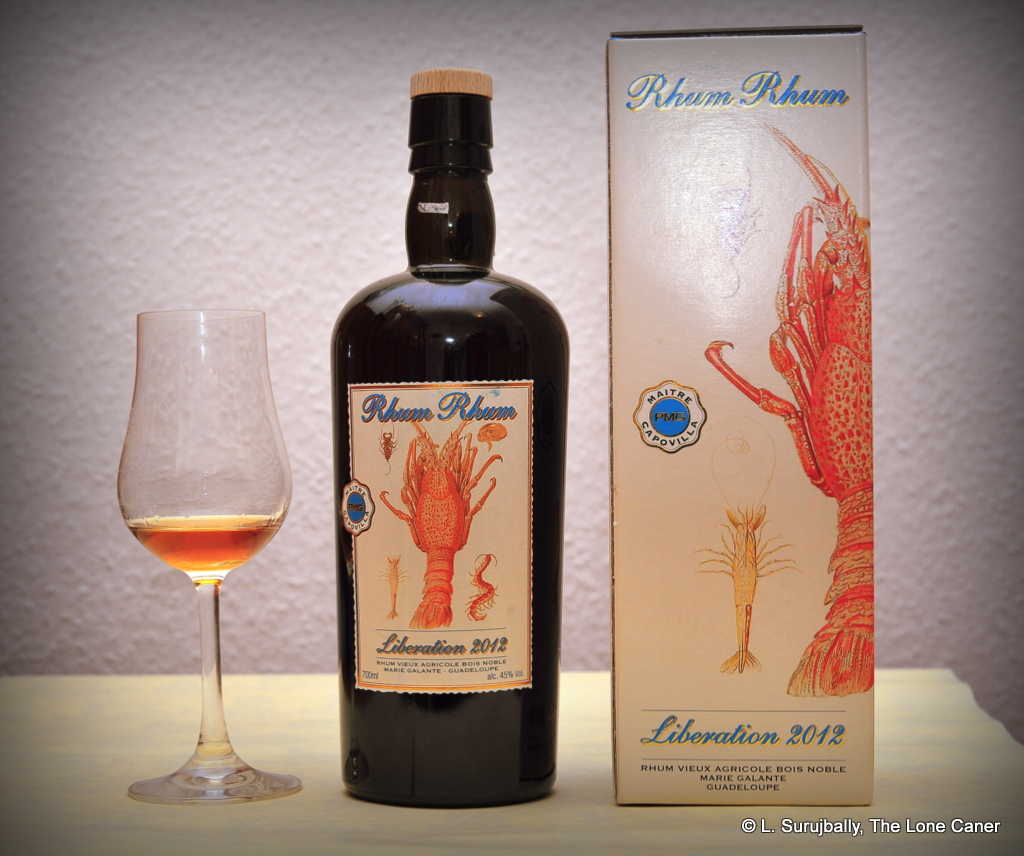
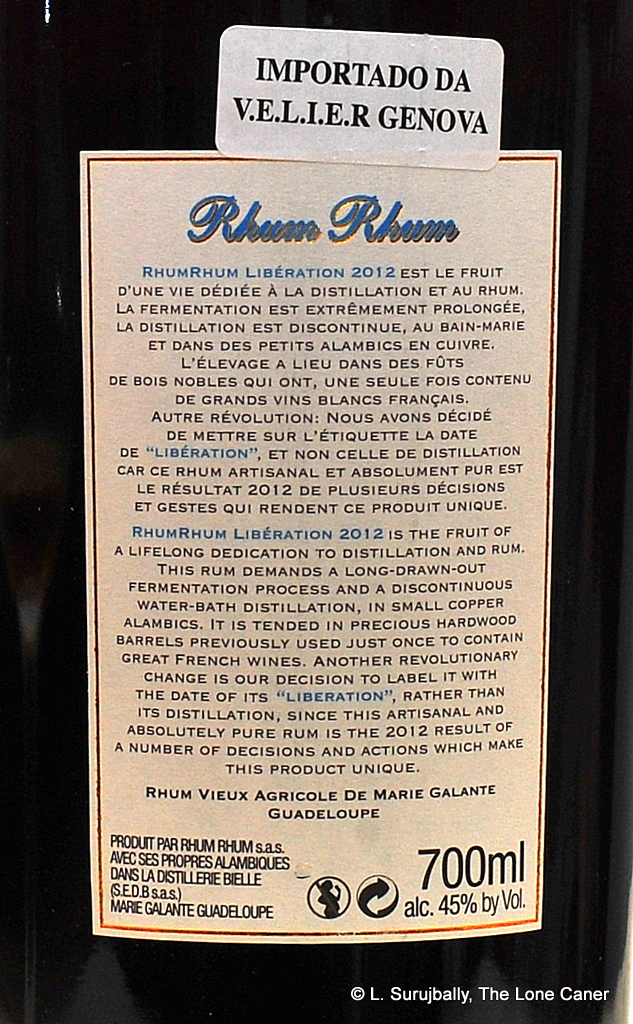
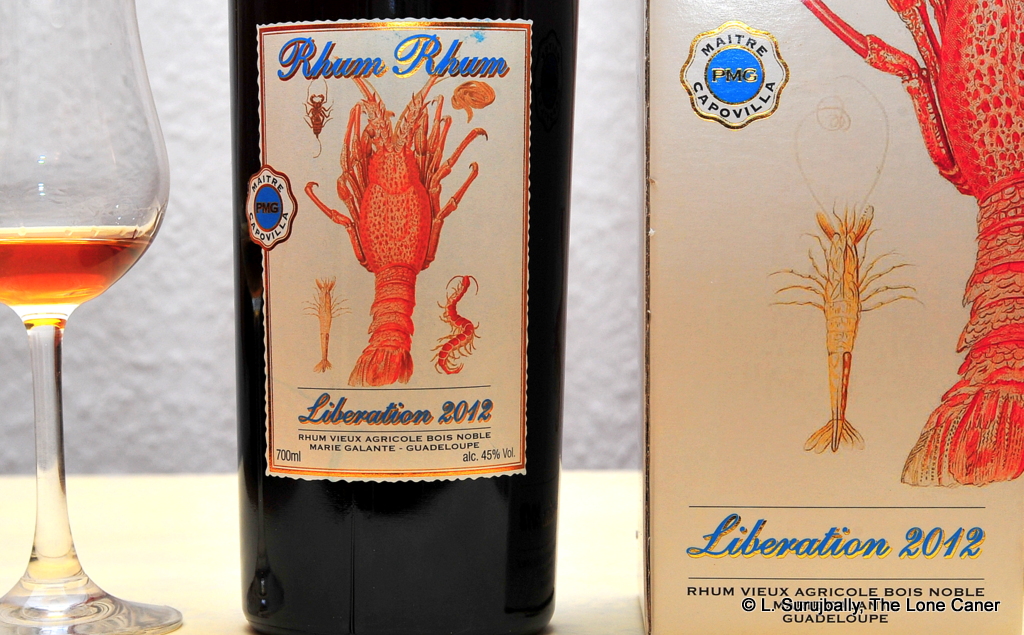
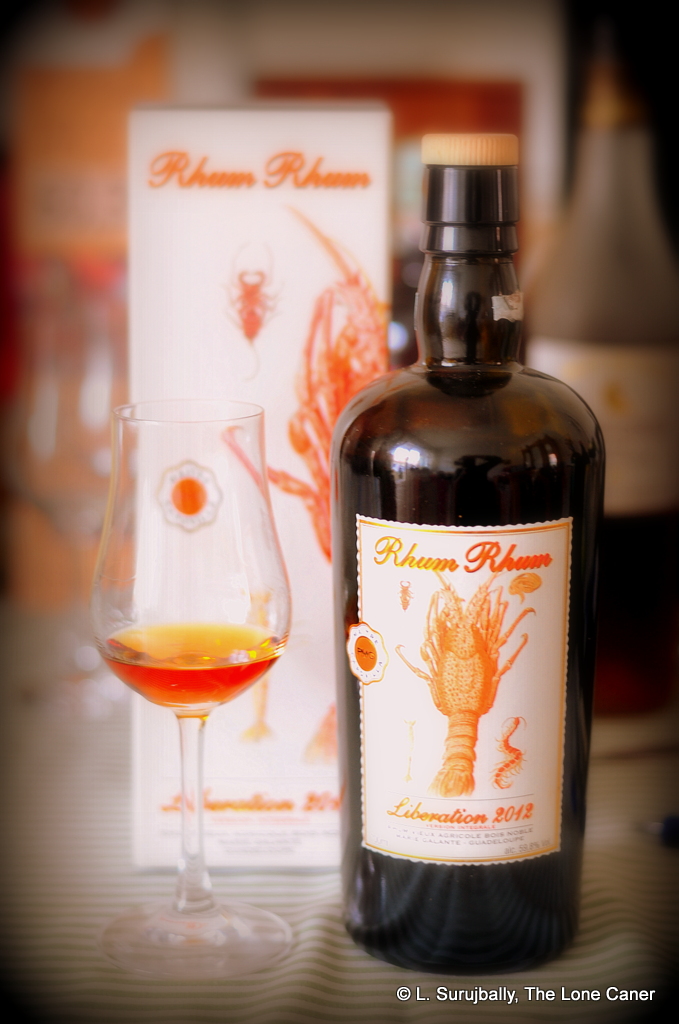
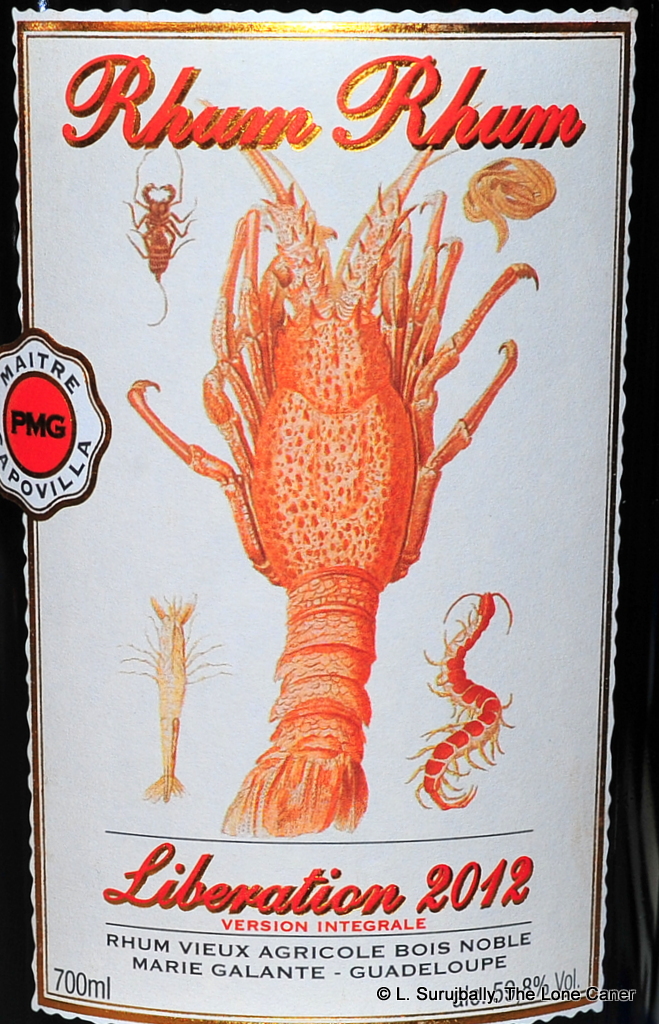 This amazing mix of class and sleaze and style continued without missing a beat when I tasted it. Sure, 59.8% was something of a hammer to the glottis but man, it was so well assembled that it actually felt softer than it really was: I tried the Liberation on and off over four days, and every time I added more stuff to my tasting notes, becoming more impressed each time. The dark gold rhum started the party rolling with plums, peaches and unripe apricots, which provided a firm bedrock that flawlessly supported sharper tangerines and passion fruit and pomegranates. As it opened up (and with water), further notes of vanilla and mild salted caramel came to the fore, held together by breakfast spices and a very good heat that was almost, but not quite, sharp – one could barely tell how strong the drink truly was, because it ran across the tongue so well.
This amazing mix of class and sleaze and style continued without missing a beat when I tasted it. Sure, 59.8% was something of a hammer to the glottis but man, it was so well assembled that it actually felt softer than it really was: I tried the Liberation on and off over four days, and every time I added more stuff to my tasting notes, becoming more impressed each time. The dark gold rhum started the party rolling with plums, peaches and unripe apricots, which provided a firm bedrock that flawlessly supported sharper tangerines and passion fruit and pomegranates. As it opened up (and with water), further notes of vanilla and mild salted caramel came to the fore, held together by breakfast spices and a very good heat that was almost, but not quite, sharp – one could barely tell how strong the drink truly was, because it ran across the tongue so well.